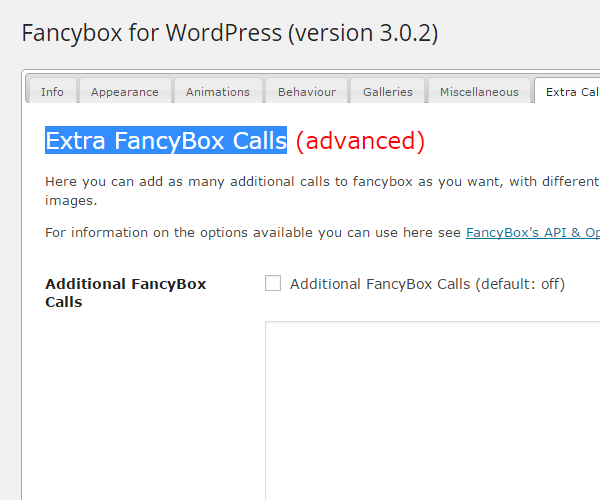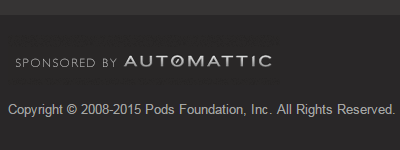One of the biggest problems we see with improving the security of websites is the amount of bad information out there, as it is hard to start to address the underlying problems when so much of what is being said is wrong. What surprised us when we started dealing with security issues is how much of that bad information comes from security companies. We don’t have the time to go through every instance of this since it is so widespread, but it is worth looking at an example of a company putting out bad information from time to time when a larger security issue is also raised.
On February 11, security researcher Claudio Viviani publicly disclosed a SQL injection vulnerability in the WordPress plugin WORDPRESS VIDEO GALLERY. According to his advisory he had notified the developer of the plugin about the issue two days before that. The next Tuesday we added the vulnerability to our Plugin Vulnerabilities plugin and on Friday, after waiting a few days to give time to the developer to release the fix, we notified the people running the WordPress.org Plugin Directory of that the vulnerability existed and had not been fixed. Following that the plugin was pulled from the directory. Earlier today they let us know the plugin had been removed and that the fixed version should be available soon. While checking to confirm that issue was fixed in the new version, which it was, we came across a forum thread that linked to a WordFence, which sells a WordPress security service, blog post entitled Zero Day SQL Injection Vulnerability in WordPress Video Gallery.
The problems with their blog post start with the title. This vulnerability wasn’t a zero day vulnerability since that involves a vulnerability being exploited before the developer or the public knows about the vulnerability. That wasn’t the case here as the vulnerability was publicly disclosed a week before and it appears the developer knew about it before that. The implications of a zero day vulnerability are much different than what this actually is, so the distinction is important. Zero day vulnerabilities do get more press coverage, so you might ask if they characterized it that way to try to get them attention.
That wasn’t the end of the problems, it continues into the content of the post:
There is currently a zero day SQL injection vulnerability in the WordPress Video Gallery plugin. Our researchers are seeing exploits in the wild for this and the exploits claim the vendor has been notified on the 9th of February.
If you click the “exploits in the wild” link what you get is not anything to do with exploits of the vulnerability in the wild, instead it is a copy of Claudio Viviani’s advisory on the Exploit Database website. The advisory itself doesn’t provide any code to exploit vulnerability. The proof of concept (POC) given simply shows where the SQL injection code would go:
http://target/wp-admin/admin-ajax.php?action=rss&type=video&vid=[SQLi]
It doesn’t include any malicious SQL code and providing the POC doesn’t really make much difference in exploiting the vulnerability since with the details of the vulnerability someone should be able to recreated the provided POC quite easily.
You really have to wonder about the competency of the WordFence researchers when they are claiming that a security advisory is somehow evidence of “exploits in the wild”.
Also in that section they half acknowledge the developer was notified of the vulnerability ahead of the exploitation, which would mean that this isn’t a zero day vulnerability as they are claiming.
The plugin still has not been updated by the vendor. Because this is being exploited actively and the vendor has been notified, we are now publicly disclosing the existence of this vulnerability.
WordFence isn’t actually publicly disclosing anything since the person that discovered the vulnerability already did that, it isn’t clear if they don’t know what public disclosure actually is or if they are intentionally trying to take credit for something they didn’t do.
A ‘googledork’ is also available in the exploit which allows attackers to use Google to find sites which suffer from this vulnerability in order to exploit them.
While this might sound ominous it doesn’t really mean much, the “googledork” in this case is simply a search query that shows URLs in Google’s index that are from RSS feature of this plugin. Here it is from the advisory:
# Dork Google: inurl:/wp-admin/admin-ajax.php?action=rss
Again this doesn’t actually matter much since all the search query does is show indexed URLs that contain the start of the path that is exploited:
http://target/wp-admin/admin-ajax.php?action=rss&type=video&vid=[SQLi]
Protecting Against Unfixed Vulnerabilities in WordPress Plugins
The situation with this plugin does get to a real problem, how do we protect against websites being hacked when known vulnerabilities in WordPress plugins are not fixed. WordFence’s solution beyond reporting the issue to the Plugin Directory, seems to be more effective at promoting their website then dealing with this type of situation:
Please share/tweet/mail this to your fellow WordPress administrators to help create awareness about this serious issue.
We have been pushing for a better approach to handling than this type of situation for years, which would involve WordPress warning admins when an installed plugin has been removed from the Plugin Directory (if you would like to see that happen please vote for it on the WordPress Ideas website). Until that happens you can use our No Longer in Directory plugin that provides a more limited version of that functionality. For this type of situation though one of our other plugins, Plugin Vulnerabilities, is more useful. This plugin warns when installed plugins have known security issue and also provides information on vulnerabilities that existed in other versions, which is useful when cleaning up a hacked WordPress website. Last Tuesday we updated the plugin to warn about this security vulnerability, so if you had our plugin installed and you had version 2.7 of the WORDPRESS VIDEO GALLERY plugin installed you would have then seen the following warning on the Installed Plugins page:




